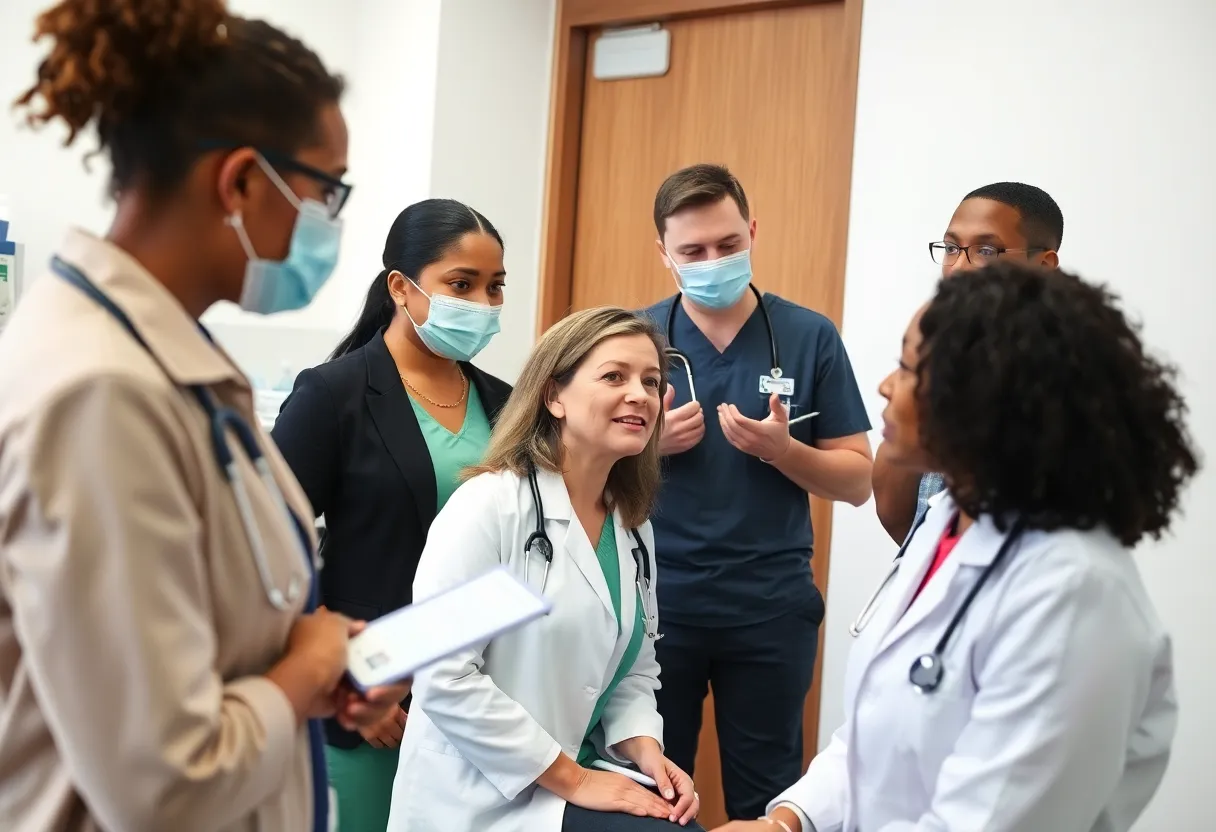The Importance of Early Screening for High-Risk Groups
Early screening is a critical component of public health strategies aimed at identifying diseases before they progress to more serious stages. This proactive approach is particularly essential for high-risk groups, who may be more susceptible to certain health conditions due to various factors including genetics, lifestyle, and environmental influences. Understanding the importance of early screening can inform health policy, clinical practices, and individual health decisions.
Defining High-Risk Groups
High-risk groups are defined by specific characteristics that increase their likelihood of developing certain health conditions. These groups can be identified based on:
- Genetic predisposition: Family history of diseases such as cancer, diabetes, or heart disease.
- Age: Older adults may be at greater risk for chronic illnesses.
- Lifestyle choices: Individuals who smoke, are sedentary, or have poor dietary habits.
- Socioeconomic status: Limited access to healthcare can prevent timely diagnosis and treatment.
By identifying and understanding high-risk groups, healthcare providers can tailor screening programs to improve health outcomes.
The Benefits of Early Screening
1. Early Detection
One of the primary benefits of early screening is the ability to detect diseases before symptoms arise. This is particularly vital for conditions such as:
- Breast cancer: Mammography can identify tumors that are not palpable.
- Colorectal cancer: Screening colonoscopies can detect polyps that could evolve into cancer.
- Diabetes: Glucose screening can identify high blood sugar levels before major complications arise.
Early detection often correlates with higher survival rates and better prognoses.
2. Preventive Care
Screening allows for the implementation of preventive measures. For example:
- Individuals identified as pre-diabetic can be counseled on lifestyle changes to prevent the onset of type 2 diabetes.
- Screening can lead to the active management of high blood pressure, preventing heart disease.
- Vaccinations and other prophylactic treatments can be recommended based on screening results.
This proactive approach can mitigate the progression of diseases and improve quality of life.
3. Resource Allocation
Integrating early screening into healthcare can enhance resource allocation. By identifying health issues early, healthcare systems can:
- Implement targeted intervention programs for high-risk groups.
- Utilize resources more efficiently, reducing unnecessary hospitalization and acute care interventions.
- Focus on education and outreach initiatives that promote health and wellness.
Effective resource utilization can lead to a more sustainable healthcare system.
Barriers to Early Screening
Despite its importance, several barriers can hinder early screening for high-risk groups. These include:
1. Access to Healthcare
Limited access to healthcare services is a significant obstacle. Factors such as:
- Lack of insurance or underinsurance can prevent individuals from seeking screening.
- Geographic barriers can limit access for rural populations.
Improving access is crucial for maximizing the benefits of early screening.
2. Awareness and Education
Total awareness regarding the necessity of early screening is often lacking in high-risk groups. Educational initiatives must focus on:
- Informing communities about the importance of regular health check-ups.
- Addressing misconceptions about screening processes.
- Promoting the understanding of personal health risks based on family history or lifestyle.
Awareness campaigns can significantly impact screening rates.
3. Cultural Factors
Cultural attitudes towards healthcare can also influence screening rates. Some high-risk groups may:
- Hold beliefs that discourage seeking preventive care or screenings.
- Experience language barriers that complicate interactions with healthcare professionals.
Healthcare providers need to adopt culturally sensitive approaches to encourage screening participation.
Successful Screening Programs
Several effective screening programs have shown promising results, particularly among high-risk populations:
1. Community Outreach Initiatives
Community-based programs actively engage high-risk groups by:
- Offering free or low-cost screenings.
- Providing mobile health clinics in underserved areas.
- Building trust within communities to foster a culture of preventive care.
2. Targeted Awareness Campaigns
Campaigns that target specific high-risk groups through tailored messaging can enhance participation. For instance:
- Educational materials in multiple languages can reach various cultural backgrounds.
- Partnerships with local leaders can amplify outreach efforts.
Effective communication boosts participation rates in screening programs.
3. Technology Integration
The advent of technology has transformed screening possibilities. Telehealth services can:
- Facilitate virtual consultations, especially for those with mobility issues.
- Provide quick access to resources and screening results.
Technology can significantly enhance early screening efforts among high-risk groups.
Conclusion
Early screening is a vital strategy for improving public health outcomes, particularly within high-risk groups. Its main advantages include:
- Facilitating early detection of diseases.
- Promoting preventive care and intervention strategies.
- Optimizing resource allocation within healthcare systems.
However, barriers such as access to healthcare, lack of awareness, and cultural factors must be addressed to enhance screening participation. Successful screening programs that target high-risk groups are essential in overcoming these challenges. Ultimately, early screening not only improves individual health outcomes but also serves the broader community by reducing the burden of disease.


















